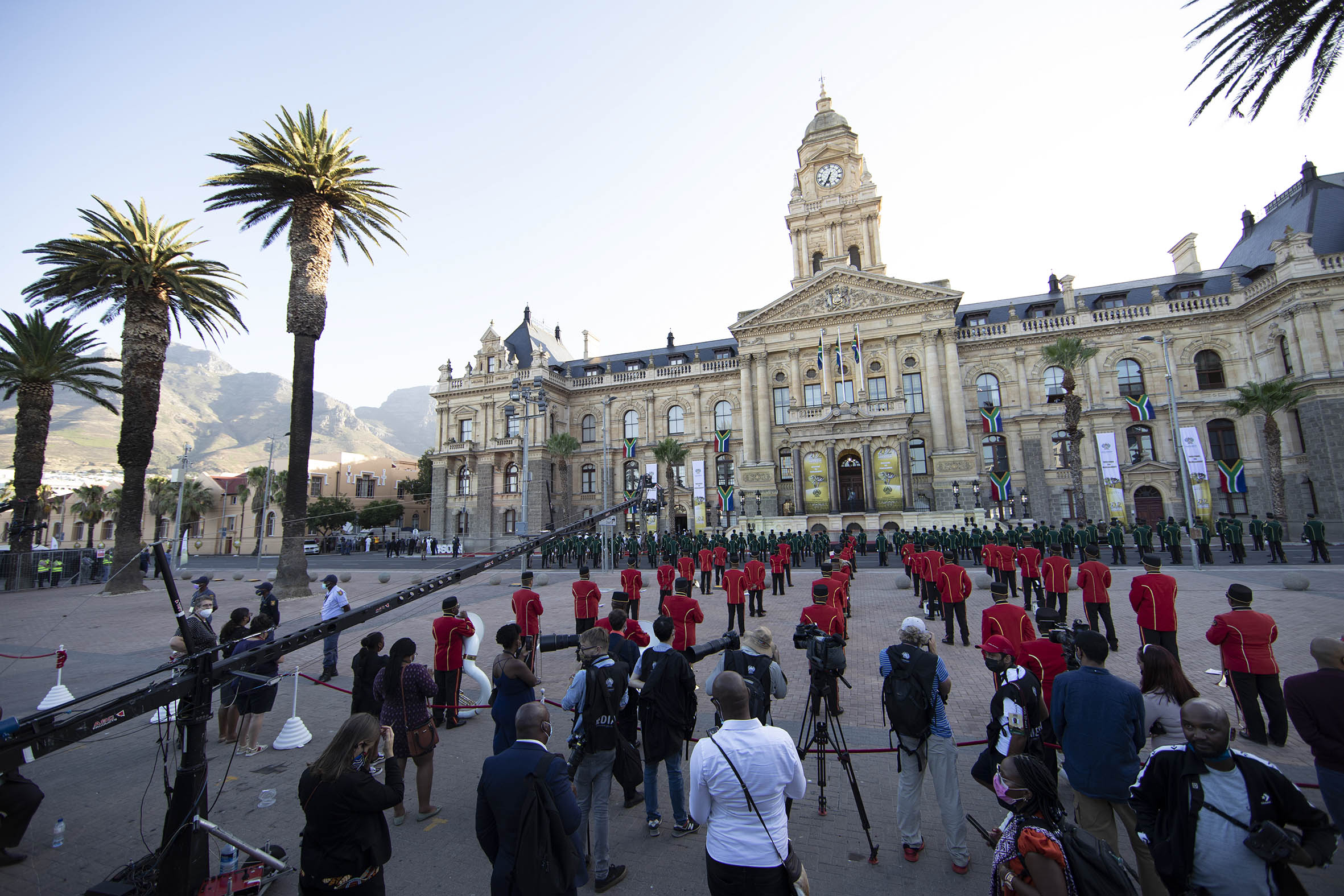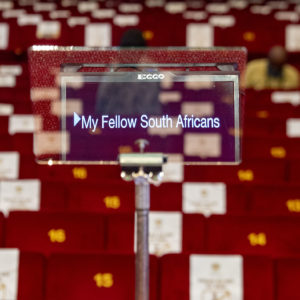No vision, no plan equals no jobs, no hope
Each state of the nation address is a random mishmash of projects dependent on the whims of the president and his speechwriters. South Africa deserves more. It needs an actual plan.
Author:
17 February 2022

At the end of a meeting with social movements and grassroots organisations on 18 January to discuss the basic income grant, President Cyril Rampahosa said South Africa’s unemployment crisis was an issue that gave him sleepless nights. Two weeks later, he called me to schedule a discussion so he could hear my views about the crisis. During the meeting I said there had been a time – between March 2003 and December 2008 – when we created 3.1 million jobs. There was no jobless growth.
The president wanted to hear about this and, half an hour before midnight and two days before the state of the nation address (Sona), he sent the zoom link to our meeting. He had just met with finance minister Enoch Godongwana, during which he had asked him to fund his presidential employment stimulus, which has created 673 514 jobs and supported 143 920 livelihoods. We talked for an hour.
Over the past four years, Ramaphosa has announced many initiatives to address the unemployment crisis. In his first Sona, he talked about a social compact that would “create drivers of economic recovery” and said: “At the centre of our national agenda in 2018 is the creation of jobs, especially for the youth.” The Youth Employment Service, a private-sector initiative, would create one million internships in three years. The Jobs Summit would “align the efforts of every sector and every stakeholder behind the imperative of job creation”. He continued: “We will seek to industrialise on a scale that draws millions of job seekers into the economy.”
Related article:
Agriculture could create one million jobs. There was no reason why tourism, which sustained 700 000 jobs, could not double in size, he said.
In his February 2019 Sona, he said the Jobs Summit agreements would create 275 000 jobs a year. The employment tax incentive would be extended for another 10 years. The oceans economy would create “over 100 000 direct jobs and more than 250 000 indirect jobs”. In the June 2019 Sona, Ramaphosa set a target to create two million jobs for young people within the next decade. In the 2020 Sona, he launched the Presidential Youth Employment Intervention, which had six priority actions over the next five years. It would be funded by top-slicing one percent of the budget every year to address the national crisis of youth unemployment. In the 2022 address to the nation, he said the hemp and cannabis sector could create 130 000 new jobs. However, all these projects have produced no results.
Since Ramaphosa became president four years ago, the number of unemployed people has increased by 3.3 million. There are now 12.5 million unemployed people. The unemployment rate has increased to 46.6% from 36.3%. There was no industrialisation, despite the many sector masterplans. The manufacturing sector has shed 389 000 jobs. The youth unemployment rate has increased to 77.4% from 63.9% as 560 000 young people lost their jobs. The Youth Employment Service created 71 000 “work experiences”. It is not clear how many of these young people are now employed. There are now 3.3 million young people who are not in employment, education or training. For Africans, the tertiary education participation rate is 18%. In South Korea it is 95%.
Prescribing wrong solutions
Unemployment is a macroeconomic policy issue that cannot be addressed through projects. Macroeconomic policies influence the performance of the whole economy. Industrial policies seek to change the structure of production according to the broad division of sectors – agriculture, industry and services – and within these sectors. Structural reform is code for privatisation, deregulation, liberalisation and the withdrawal of the state from network industries – electricity, transport, telecommunications and water. It refers to measures to improve the supply (or production) side of the economy by removing institutional and regulatory impediments to the functioning of free markets.
However, the National Economic Development and Labour Council has never had any say on macroeconomic policy since it was established in 1995. The Jobs Summit agreement is a list of about 80 projects, most of which the government has not implemented. The government’s Economic Reconstruction and Recovery Plan recycles old infrastructure projects.
In his address to the nation, Ramaphosa said: “We have given ourselves 100 days to finalise a social compact to grow our economy.”
This will be an exercise in futility since it will involve trying to find new ways of implementing failed projects and “low hanging fruits”, because the government refuses to have a genuine social compact that includes macroeconomic policies that can address the unemployment crisis. Yet again, Ramaphosa told the nation about the R100 billion infrastructure fund. But every year since 2019, the National Treasury has made an allocation to the fund that was subsequently cancelled.
Related article:
The Department of Trade, Industry and Competition’s industrial policies focus on a few sub-sectors within manufacturing, which only accounts for 13.1% of GDP. There is no vision for the future structure of the whole economy. Over the past four years, the trade department’s industrial financing has declined by 4.1% a year. Total financing from the department and the Industrial Development Corporation was R11.3 billion in 2021, which was equivalent to 0.2% of GDP. This is too little to shift the dial.
The proposed structural reforms in energy and transport will only close 6.6% of the annual investment shortfall required to reach the 30% of GDP target that is in the National Development Plan. It is not clear why private sector companies would pay for access to a broken rail system. National Treasury’s own modelling has shown that the reforms will not have a large impact on the economy.
South Africa is on a dangerous development path, as former Statistician-General Pali Lehohla said at a recent South African Council of Churches workshop on the economic crisis. There is a relationship between GDP growth and employment. An employment multiplier measures the percentage increase in employment that is associated with a one percentage point increase in GDP.
‘Economic growth alone not enough’
Asghar Adelzadeh and others have forecast an annual average GDP growth rate of 1.8% a year until 2030 based on current policies. Assuming an employment multiplier of 0.8 and an annual average 2.4% growth of the labour force – slightly lower than the pre-Covid average between 2014 and 2019 – there will be 16.9 million unemployed people by 2030. The unemployment rate will be 50.9%.
Due to the scale of the crisis, economic growth alone will not be enough. With an annual average GDP growth rate of 6%, there will still be 11.4 million unemployed people by the end of the decade. The government must implement industrial policies that increase the employment multiplier – by steering production to sectors that have high multipliers. It must expand public employment programmes and introduce a job guarantee and provide income support in the form of a basic income grant.
But the government’s solution to this crisis is to privatise (or financialise) everything from prosecutions to school infrastructure because of perceived fiscal constraints. When there is a social problem, the private sector must fix it. But South Africa’s debt is not high by international standards, even when benchmarked against upper middle-income countries.
Economist Dick Forslund says: “South Africa has a vast public sector balance sheet that includes assets in the Public Investment Corporation of R2.4 trillion and foreign exchange reserves of almost R900 billion in December 2021. But an alliance between the corporate faction in the ANC and the Democratic Alliance needs a debt crisis to push a political agenda of privatisation.”
Reading Ramaphosa’s six addresses to the nation, it soon becomes clear that there is no mobilising vision and plan for the economy. Each address is a random mishmash of projects whose selection depends on the whims of the president and his speechwriters. There are no macroeconomic and social targets. For example, South Africa has had a “buy local” campaign for two decades.
Related article:
But there are no targets against which we can measure its success and hold people accountable, or policy tools to achieve its objectives. Forslund says: “The localisation strategy relies on moral persuasion. There are no tariffs to protect local producers. I was speaking to the leader of the union that made the president’s shoes, and he told me there are now 17 000 people employed in the industry. More than 20 000 people have lost their jobs.”
In the Asian developmental states, the mobilising vision was to double the size of the economy every decade. This required an annual GDP growth rate of about 7%. The vision was broken down into five-year plans that had annual targets which were adjusted every year. Throughout each year, the governments would adjust the tools of macroeconomic policy to achieve the annual growth targets.
More than three decades ago, former Malaysian prime minister Mahathir bin Mohamad outlined the objectives of his country’s vision 2020: “With regard to the establishment of a prosperous society we can set many aspirational goals. I believe that we should set the realistic (as opposed to aspirational) target of almost doubling our real GDP every 10 years between 1990 and 2020. If we do this, our GDP should be about eight times larger by the year 2020 than it was in 1990.”
Malaysia achieved this target. Between 1994 and 2020, Malaysia’s GDP per capita increased by 654% in local currency. South Africa’s GDP per capita increased by only 16.1% over the same period.



